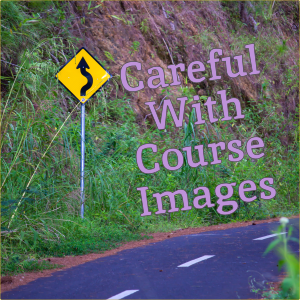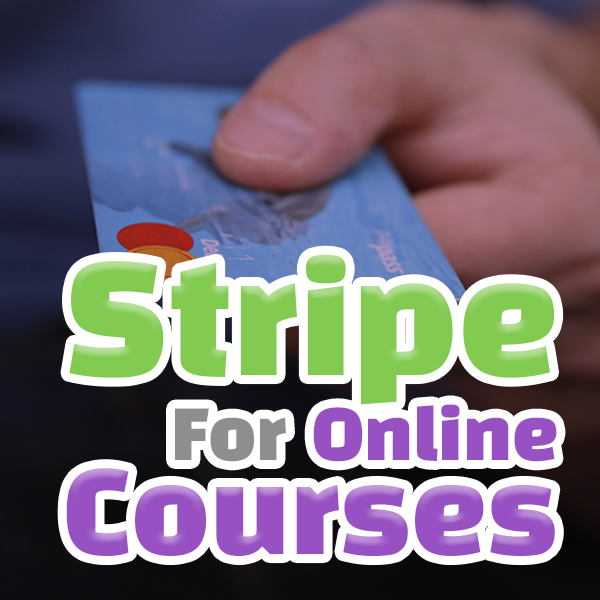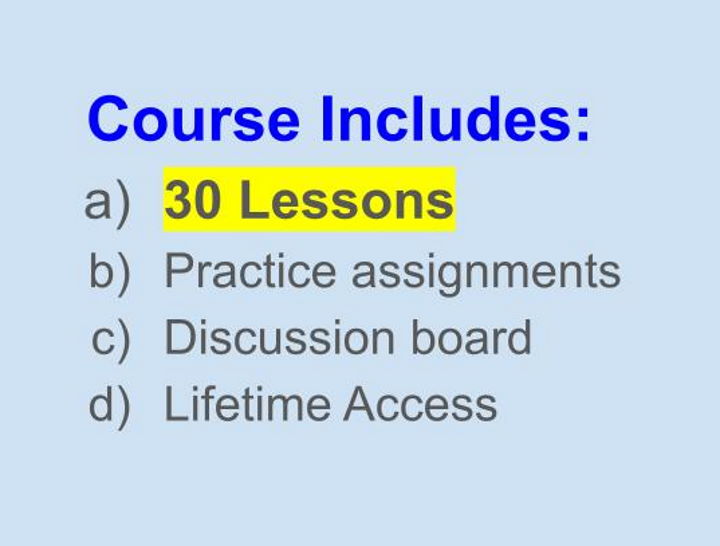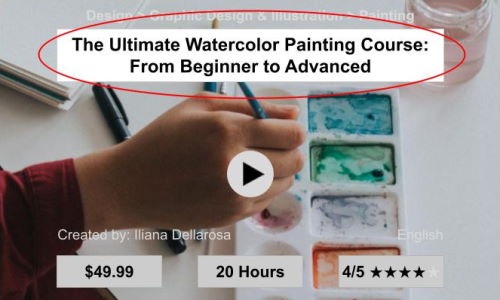This lesson will help online course teachers who don’t know much about sourcing photos learn about their options and avoid common business and legal traps.
Knowing about image rights is great for people who:
- Don’t know about copyrights and trademarks
- May not be skilled with photography terms
- Think that royalty-free always means free for any use
- Aren’t trained with licenses and terms
- Don’t know about attribution
- May not have a big budget to create high-end looks
- Are using contractors but aren’t sure how they get their images
This article will help online course teachers create slides, resources, articles, ads, and more.
You’ll also learn how to leverage high-quality art without blowing your budget and getting in trouble.
Why You Shouldn’t Use Images You Find In A Web Search
You can’t just search for images on the internet and use them. There are laws that protect photos and images on the internet.
Companies use robots to scan for unlicensed images. Once they find an unlicensed image that belongs to them, they will send you a bill and even a scary legal cease and desist order to immediately remove their assets.
Oh, and don’t think they can’t detect their original image because you cropped the image, added some text, changed a few colors, or ran the image through a filter – because they can…
Copyright Law
Copyright law protects creators from having their work displayed, stolen, copied, or reproduced without their permission.
The image owner has exclusive rights to:
- Reproduce the work
- Create derivative works
- Sell or distribute copies
- Display the work publically
Copyright law includes works such as 2d, 3d, fine art, graphic arts, photographs, models, charts, illustrations, diagrams, and technical drawings.
Fair Use Ambiguity
In some cases, fair use means that you can use a copyrighted picture for education, personal, research, or if it’s beneficial to the public.
One example of fair use is when review websites use photos or screenshots of products to summarize a product or service without permission.
Determining fair use can sometimes be very complicated and we recommend that online course teachers use royalty-free or licensed content with clear terms of use.
Trademarks
Trademarks provide legal protection for a logo, phrase, word, or design.
So you will want to avoid images that contain obvious trademarks in the picture.
Some examples could be:
- A photo of someone else’s painting in a museum
- A photo in a store with store branding all over
- A photo of you sewing that also includes the logo of the sewing machine
Remember that you may sell or earn revenues from your course lessons, videos, and ebooks. Therefore, you need to own what you sell or have the right to sell every part of your product. You don’t want any gray areas about the income that you earn. You also don’t want to get legally and financially charged with hurting another brand.
Free Images
Three types of free images are important to review because they may not be free to get or to use freely.
Royalty-Free
A Royalty-Free (RF) image can be used without paying additional fees to the copyright holder each time the image is used.
Royalty-free images may be free to download or require an upfront payment to buy and license.
Once you acquire a royalty-free image, you can use it multiple times without extra charges. But there may be limits based on your license.
This can be useful for:
- Multiple prints of a book or ebook
- Multiple visits of students to your website
- Multiple impressions of an ad for your community
Public Domain
When an image belongs to the Public Domain (PD), it means it is not subject to copyright laws.
Public domain images happen when:
- The owner of the work passes away
- The owner has abandoned all rights to the work
- The copyright of an image has expired
- The image is not copyrightable
Course creators should use caution because sometimes it isn’t clear if photos are 100% in the public domain.
Creative Commons (CC)
When photos use a Creative Commons license, the copyright owner allows certain uses and distribution.
There are seven types of CC licenses:
- CC BY
- CC BY-SA
- CC BY-NC
- CC BY-NC-SA
- CC BY-ND
- CC BY-NC-ND
- CC0 – Public Domain Dedication
For more information visit https://creativecommons.org/about/cclicenses/
Since there are several CC licenses, you need to verify and follow the rules allowed by each image used. It can also start to be a little bit of a management nightmare if you use many CC sources.
Where To Get FREE Royalty Free Images For Courses
My favorite place to get royalty free images is Unsplash.com. It has a giant searchable library of high-quality photos. It’s easy to find, browse, and ultimately download photos. They also make it very easy to see, copy, and download photo source information. You can even search by orientation or color, and sort the results in a variety of ways.
Here are my top sources of Royalty Free images:
Attributions For Course Images
In some cases, you may have to use attribution. Even if you don’t have to, you may want to do it, because it’s the right thing to give that creator credit. Attribution is when you give credit to the photographer or source, with something like Photo by NAME on Service. Sometimes the attribution could even have hyperlinks to the creator’s page or source web page.
Where To Get Licensed Images For Online Courses
Graphic Services
Sometimes you can get high-quality images that don’t require attribution from graphic services.
For example, you can use free or pro versions of Canva or Vistacreate to create artwork that uses stock imagery. This stock imagery is either free or included as part of your premium plan.
Licensed
The best quality images are often licensed from premium content providers. These companies provide very high quality, large selections, and unique content.
Unfortunately, these providers can be expensive, and many restrict the number of photos you can access based on price, credits, or monthly plan. Some also charge by the size of the photo using resolution or dots per inch (DPI).
My favorite premium provider is Envato PhotoDune Elements, which offers great images for about $5. I also really like IconFinder, which has high-quality icons for about $2.
Here are some of the best high-end stock photography companies:
- Envato Photo Dune
- iStock (Getty Images)
- Shutterstock
- Adobe Stock
- Tonl Culturally Diverse
Remember, you will be playing with legal fire if you choose to browse these premium archives and utilize a variation of one of their photos without licensing. FYI: The most fierce is Getty Images.
The best part of licensed images is that you can usually use them without attribution and you can crop, modify, mix, layer text, etc.

Make Your Own Images For Online Courses
In some cases, you may not be able to find the content that you are looking for and may want to just make your own.
Some of the original content you can make include:
- Photos
- Sketches
- Illustrations
- Diagrams
- Samples
- Process Photos
Just be sure to not include potentially copyrighted or trademarked content in your photo, by hiding or blurring product logos.
Cost, Benefit, And Risk Of Images For Your Business
Some assets like the hero image on your course cover are critical and you don’t want to be forced to change it or be limited by free license requirements. In some cases, you also don’t want to use a commonly available picture for your premium course materials.
However other images like blog or community post images can easily use royalty-free images without devaluing your brand. These royalty-free images are no/low cost and provide decent secondary media.
It’s usually ok if your post image has been seen before, like a picture of a frustrated student used by many teachers. Most students won’t realize that you sourced your images from stock companies.
But if you want to aim and pay for original high-quality content, then you should probably license stock photos or make your content.
As a course developer, you will have to decide which assets require photos that cost more with higher benefits vs costing less with average benefits.
The same goes for your risk tolerance when you consider using questionable public domain content, photos that contain other trademarks, or unsourced photos found on the web.
Keep Sourcing Notes Of All Your Course Images
You should keep notes of the images you source in your business. Ideally, you have a shared directory accessible by your whole team that has an archive of all images used by your business.
You’ll want to track:
- The filename of the image as originally downloaded
- The original unaltered image it may contain extra metadata
- Source company like Unsplash so you can look up the license later
- Employee, vendor, or contractor that found and downloaded the image
- Attribution information like photographer, optional source URL, and source company
- Your downloaded text or PDF license if you paid for the image
You may also want to maintain the original filename or come up with a good file prefix like unsplash_name_modifications_720x300.jpeg as you create derivative works. You can also use a similar prefix for the license and notes file.
- unsplash-wood-sculpture-lady-jeremy-123.jpg
- unsplash-wood-sculpture-lady-jeremy-123_300x300-cropped.png
- unsplash-wood-sculpture-lady-jeremy-123-metadata.txt
Getting Course Images Bottom Line
Avoid creating your business assets on quicksand by using free and licensed images appropriately.
Now that you know how to get course images, here is a summary of the key considerations:
- Don’t just use images you find on the web
- Read license agreements on any free photos to verify the exact terms
- Use reputable sites for Royalty-Free images
- You can get some good images that don’t need attribution via graphic apps like Canva
- Prices vary on stock photos, but we like the price and selection on Envato
- Consider making your images if it makes sense
- Use different cost/quality images across your business like course sales page vs blog
- Keep track of your images by downloading licenses or attribution text notes
Oh, and if your course business is starting to get complicated, be smart and find a lawyer who specializes in Copyrights, Trademarks, and IP (Intellectual Property).
You should be a little more smarter now. Thanks for hanging out!
Please subscribe to get more tips for creative online course teachers.

These lessons can also help you with Education and Course Content:
- How To Create A Guide For Your Online Course?
- Top 25 Best Free Stock Photo Sites for Stunning Images – Thinkific
- How To Outsource Online Course Work For Creative Teachers
- Include Bonus Content – For Increased Sales & Satisfaction
- Definition of a Royalty-Free Image – Chron











